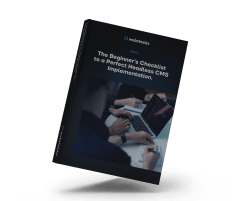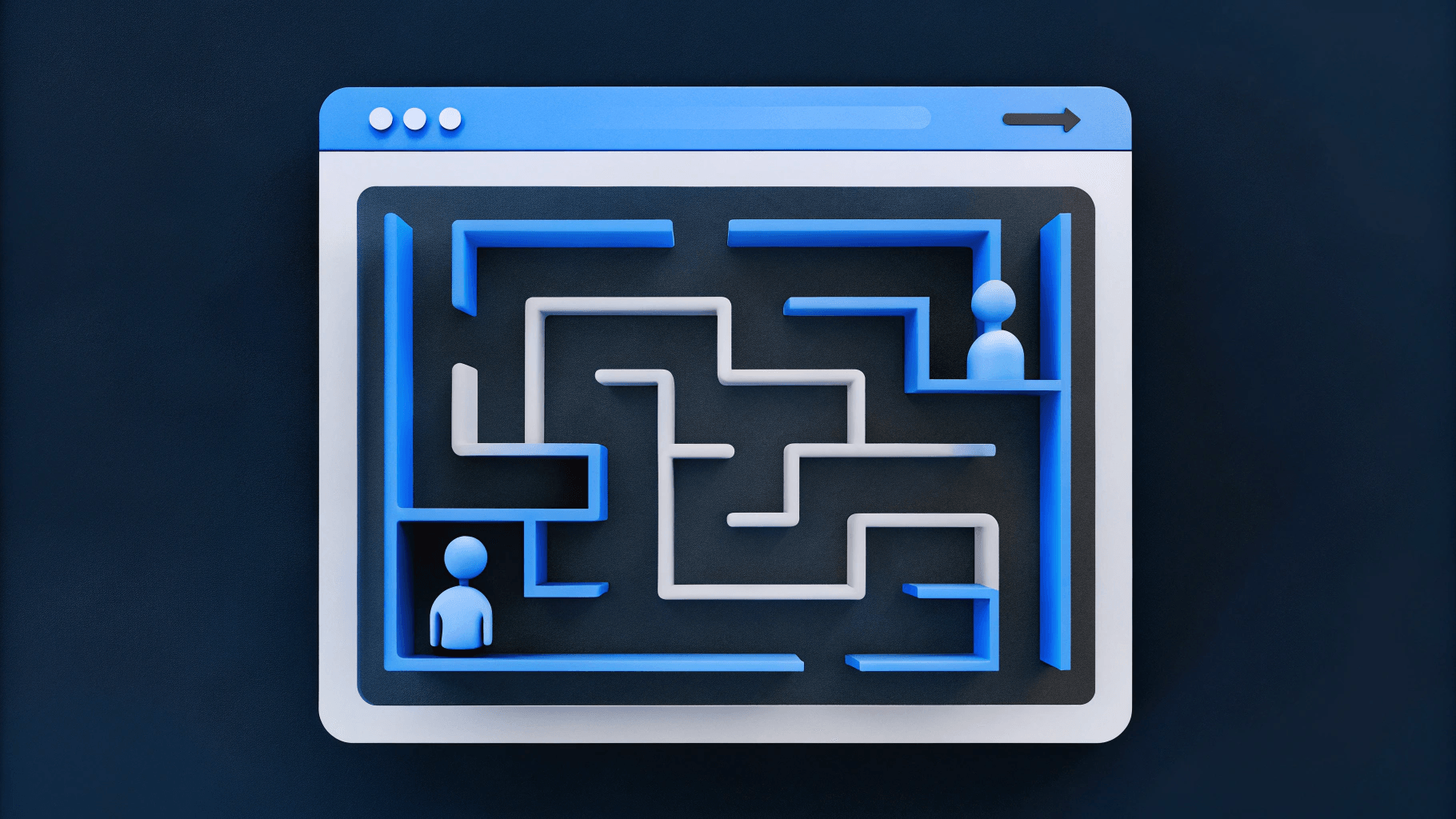Imagine a website that welcomes everyone, regardless of their abilities—that's the aim of web accessibility in web design. By prioritizing inclusivity, you not only improve user experience but also reach a wider audience and strengthen your brand's reputation.
What is Web Accessibility?
Web accessibility is the practice of designing and developing websites that everyone can use, including people with disabilities. It ensures that all users can perceive, understand, navigate, and interact with web content.
Why Web Accessibility is Important
Making websites accessible benefits everyone. It allows people with auditory, cognitive, neurological, physical, speech, and visual impairments to use your site. Accessibility considerations can also improve the experience for older users, mobile users, and those with temporary disabilities or situational limitations.
Accessible design can:
- Expand your audience by reaching users who might otherwise be excluded
- Improve overall user experience and engagement
- Enhance your brand reputation by demonstrating social responsibility
- Boost your search engine optimization (SEO), as accessible sites are often better structured, and applying technical SEO optimizations can further improve visibility
Legal and Ethical Considerations
Many countries have laws requiring web accessibility, such as the Americans with Disabilities Act (ADA) in the United States. Failing to comply can result in legal action and penalties. Ethically, providing an accessible website is the right thing to do. It promotes inclusivity and equal access to information for all users.

How to Understand Disabilities and Assistive Technologies
To create an accessible website, it's crucial to understand the various disabilities that can affect how users interact with web content.
Explore Types of Disabilities Affecting Web Use
Different disabilities can impact web usage in unique ways:
- Visual Impairments: Visual impairments include blindness, low vision, and color blindness. Support these users by providing text alternatives for images, ensuring sufficient color contrast, and allowing text resizing without loss of functionality.
- Hearing Impairments: Users who are deaf or hard of hearing may miss important information if audio content doesn't have captions or transcripts.
- Mobility Impairments: Physical disabilities can make using a mouse or standard keyboard difficult. Ensure full keyboard accessibility and provide large clickable areas.
- Cognitive and Neurological Disabilities: Conditions like dyslexia, ADHD, or autism can affect how users process information. Clear navigation, simple language, and consistent layouts improve usability for these individuals.
- Speech Disabilities: Users with speech impairments might struggle with voice-activated features. Offering alternative input methods is essential.
Learn About Common Assistive Technologies
Assistive technologies enable users with disabilities to access and interact with web content:
- Screen Readers: Software like NVDA or VoiceOver reads text aloud, allowing users with visual impairments to navigate websites through audio feedback.
- Screen Magnifiers: These tools enlarge content on the screen, aiding users with low vision.
- Alternative Input Devices: Equipment such as specialized keyboards, eye-tracking devices, or switch controls help users with mobility impairments.
- Voice Recognition Software: Programs like Dragon NaturallySpeaking enable users to control their computers and input text using voice commands.
- Text-to-Speech Tools: These convert written text into spoken words, assisting users with reading difficulties.
- Captions and Transcripts: Providing captions for videos and transcripts for audio content supports users who are deaf or hard of hearing.
By understanding these disabilities and the technologies people use, you can design a website that's inclusive and accessible to everyone.
Web Content Accessibility Guidelines (WCAG)
Understanding and applying the Web Content Accessibility Guidelines (WCAG) is essential for creating websites that are accessible to all users.
Understand WCAG
WCAG provides a set of international standards developed to guide web designers and developers in making web content more accessible. These guidelines help ensure that websites are usable by people with a wide range of abilities, including those with disabilities.
Principles of WCAG: POUR
WCAG is built upon four main principles, commonly referred to as POUR:
Perceivable
Your content must be presented in ways that users can perceive. This means offering:
- Text alternatives for non-text content, like images and videos.
- Content that can be adapted without losing meaning, such as adjusting text size or using different styles.
- Ways to make it easier for users to see and hear content, like sufficient color contrast and controls for audio.
Operable
Users must be able to operate your website's interface. Ensure that:
- All functionality is available via keyboard navigation.
- Users have enough time to read and use content.
- Navigation is clear and helps users find content easily.
Understandable
Your content and interface should be understandable. This involves:
- Using clear and simple language.
- Making content appear and operate in predictable ways.
- Helping users avoid and correct mistakes, especially in forms.
Robust
Your content should be robust enough to be interpreted by a wide variety of user agents, including assistive technologies. This includes:
- Using standard HTML and web technologies.
- Ensuring compatibility with current and future tools.

How to Implement Accessibility in Web Design in 6 Steps
Making your website accessible involves incorporating best practices in web design and selecting the appropriate tools, such as choosing the best CMS. Here are key areas to focus on:
1. Provide Text Alternatives for Non-Text Content
Provide text alternatives for images, videos, and other non-text elements. Alt text allows screen readers to convey the purpose of an image to users who are visually impaired. For meaningful images, describe the content succinctly and accurately. For decorative images that don't add information, use empty alt text (alt="") so screen readers can skip them. This practice aids accessibility and can improve your site's SEO.
2. Ensure Keyboard Accessibility
Ensure all website functionality is accessible via keyboard. Keyboard accessibility is crucial for users who cannot use a mouse due to mobility impairments. Implement a logical tab order for navigation and interactive elements, allowing users to move through the page efficiently. Provide visible focus indicators, such as highlighting or underlining, so users know which element is active. Avoid keyboard traps where users get stuck and can't navigate away from an element.
3. Create Navigable Content
Organize your content with a clear and logical heading structure. Use headings (H1, H2, H3) to create a hierarchy that assists users in understanding the layout and importance of content. Descriptive headings enable users, especially those using screen readers, to navigate quickly to the sections they need. Consistent navigation menus and clearly identifiable interactive elements help users find information efficiently. Paying attention to designing navigation menus enhances user experience and accessibility.
4. Make Content Readable and Understandable
Write in clear, simple language to make your content accessible to a wider audience, including those with cognitive disabilities or non-native speakers. Use legible fonts and appropriate font sizes to enhance readability. Ensure sufficient color contrast between text and background to aid users with visual impairments. Provide clear instructions and feedback for interactive elements like forms, including specific error messages and guidance for correction. Following established design system standards can help achieve these goals.
5. Prevent Seizures and Physical Reactions
Be cautious with content that flashes or blinks. Avoid using animations or visual effects that flicker more than three times per second, as they can trigger seizures in susceptible individuals. Providing controls to pause or stop animations helps users manage their experience comfortably.
6. Ensure Compatibility with Various User Agents
Build your website using semantic HTML to ensure compatibility with different browsers and assistive technologies. Use standard web technologies and follow best practices to ensure your content is robust and can be interpreted reliably by screen readers, browsers, and other user agents. Regularly test your site with various devices and assistive technologies to identify and fix compatibility issues. Incorporating responsive design principles improves accessibility and overall site performance and user experience.
How to Test and Evaluate Web Accessibility
Testing and evaluating your website's accessibility ensures it meets the needs of all users.
Apply Manual Testing Techniques
Manual testing involves evaluating your site as a user would. Navigate through the website using a keyboard to ensure all functionality is accessible without a mouse. Check that interactive elements like forms and menus are operable via keyboard commands.
Use screen readers such as NVDA or VoiceOver to experience the site from the perspective of users with visual impairments. This helps identify issues with content structure, navigation, and alternative text for images.
Involve people with disabilities in your testing process. Their feedback offers valuable insights into real-world usability and can highlight issues that might be missed otherwise.
Use Automated Testing Tools
Automated tools can help identify common accessibility problems quickly. Integrate these tools into your development workflow to catch issues early. Examples include:
- WAVE Web Accessibility Evaluation Tool: Provides visual feedback about the accessibility of your web content.
- axe DevTools: Offers browser extensions to detect accessibility issues directly within your development environment.
These tools can point out issues like missing alternative text, insufficient color contrast, and improper heading structure. While automated testing is helpful, it should complement, not replace, manual testing.
Conduct User Testing with Assistive Technologies
Testing with assistive technologies gives you a deeper understanding of how users with disabilities interact with your site. Familiarize yourself with tools like screen magnifiers and voice recognition software.
Conduct tests using different devices and settings. For example, increase text size to ensure content remains readable when resized, or check that your layout adapts correctly on various screen sizes.
By experiencing your website through the lens of assistive technologies, you can identify barriers and make necessary adjustments to improve accessibility.

How to Maintain and Improve Web Accessibility
Maintaining your website's accessibility is an ongoing commitment to providing an inclusive experience for all users.
Perform Regular Audits and Updates
Accessibility isn't a one-time task but a continuous process. As your website evolves, regularly assess and update its accessibility features. Conduct both automated and manual testing to identify and fix issues early. Integrate accessibility testing tools like axe-core, WAVE, or Lighthouse into your development workflow to catch problems during development.
In addition to automated tools, test your site with various assistive technologies and real users. Involving people with disabilities in your testing process provides valuable insights and ensures your website meets their needs. Regular audits help maintain compliance with the latest Web Content Accessibility Guidelines (WCAG) and legal requirements in your target markets, ensuring a future-proof website.
Make accessibility testing a regular part of your development and deployment cycle. Integrate checks into your continuous integration and deployment pipeline to ensure that new updates don't introduce accessibility barriers. When updating content, following a content migration checklist can help maintain accessibility standards.
Stay Informed on Accessibility Standards
Accessibility standards and best practices evolve over time. Stay updated on the latest WCAG guidelines and adjust your website accordingly. Familiarize yourself with accessibility laws relevant to your audience, such as the Americans with Disabilities Act (ADA) in the U.S. or the European Accessibility Act (EAA) in the EU.
Continuously educating yourself and your team on accessibility ensures your website remains compliant and user-friendly. Subscribe to reputable resources like the World Wide Web Consortium (W3C) to receive updates on new developments in web accessibility.
Engage with the accessibility community to share knowledge and learn from others' experiences. Staying informed helps you adopt new techniques and tools that improve accessibility for all users.
Conclusion and Resources
As you work towards web accessibility, remember the key principles that make your website inclusive and user-friendly for everyone. By implementing best practices such as providing text alternatives, ensuring keyboard accessibility, maintaining clear navigation, and designing with sufficient color contrast, you comply with legal standards, improve the user experience, and demonstrate social responsibility.
Explore Additional Resources for Learning
To deepen your understanding and help you implement web accessibility effectively, consider exploring the following resources, including our web glossary:
- Web Content Accessibility Guidelines (WCAG): Provides comprehensive guidelines for making web content more accessible. Visit W3C's WCAG 2.1 documentation for detailed information.
- MDN Web Docs on Accessibility: Offers a wealth of tutorials and articles on web development and accessibility practices. Check out MDN's Accessibility Guide.
- Accessibility Testing Tools:
- Inclusive Design Principles: Learn more about creating inclusive web experiences by visiting Inclusive Design Principles.
By using these resources, you can stay informed and continue improving your website's accessibility, ensuring it serves all users effectively.
By prioritizing web accessibility, you comply with legal standards, improve the user experience, and demonstrate social responsibility. Implement the best practices covered in this guide, and you'll create a website that's inclusive, effective, and reaches a broader audience.
Ready to elevate your web design? See the Webstacks difference by scheduling a brief discovery call with us today. Visit Webstacks to get started.




